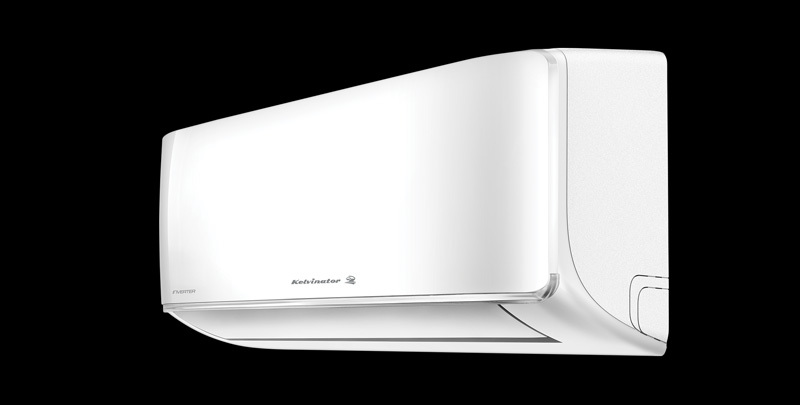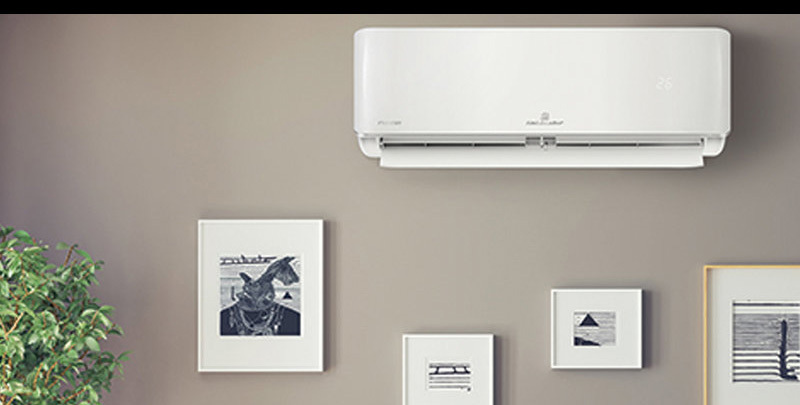Imagine your Kelvinator air conditioner as your best friend during the scorching heat bringing warm air, but what if it starts acting up? Don’t fret! Our beginner’s guide dives into Kelvinator air conditioner troubleshooting, offering easy solutions to keep the cool air flowing.
Understanding Your Kelvinator Air Conditioner
To be able to fully master the art of Kelvinator air conditioner troubleshooting, fully understanding how it works is already half the job. Kelvinator air conditioners are marvels of modern comfort, combining ingenious engineering with user-friendly functionality.
Let’s unravel the inner workings and components that make your Kelvinator AC a reliable oasis during sweltering days.
Power Supply and Anti-Cold Air Function
Understanding how power is supplied and how the innovative anti-cold air feature works is crucial for efficient and comfortable operation. Let’s start with the power supply and the anti-cold air function.
- Power supply stability: At the heart of every Kelvinator air conditioner is a robust power supply mechanism. The unit relies on a steady flow of electricity to power its various components. Ensuring a stable power source with a relevant supply power point and circuit breaker is fundamental to preventing disruptions and maintaining optimal performance.
- Anti cold air function: Kelvinator understands the importance of not just cooling but ensuring comfort. The anti-cold air function is a smart feature designed to prevent uncomfortably cold air from being blown directly onto occupants. It intelligently regulates the air temperature, contributing to a pleasant and consistent cooling experience.

Dive Into the Indoor Unit
With the two main defining components of the Kelvinator air conditioner discussed, it’s time to take a closer look at what the indoor unit entails.
- Fan motor and airflow: The indoor unit houses the fan motor, a pivotal component responsible for circulating air within your living space. Understanding the fan motor’s functions and addressing any faults ensures efficient airflow. Proper airflow is essential for even cooling and preventing cold or warm spots in the room.
- Airflow air filter and indoor coil: The air filter plays a crucial role in maintaining air quality and system efficiency. Regularly checking and cleaning or replacing the air filter is imperative for optimal performance. Additionally, the indoor coil, also known as the indoor heat exchanger, facilitates the heat exchange process, contributing to the cooling cycle.
- Remote control and settings: Your Kelvinator air conditioner’s remote control is the command centre, allowing you to adjust settings with ease. Familiarising yourself with the remote control functionalities, including temperature settings and mode adjustments, empowers you to customise your indoor climate according to your preferences.
Common Problems and Quick Fixes
Now that you have a basic understanding of how your Kelvinator air conditioner works, it’s time to unravel the most common issues you might encounter as you continue using your unit. At the same time, we also provided corresponding troubleshooting tips.
- Unresponsive remote: If your remote seems unresponsive, start by checking the batteries. Replace them if needed, and ensure there are no obstructions between the remote and the indoor unit’s receiver. If the issue persists, it might be time for a new remote.
- Outdoor unit woes: The outdoor unit is exposed to the elements, and issues may arise. Check for debris or obstructions around the unit. If you notice unusual sounds or vibrations, it could be a faulty fan motor. Contacting a professional may be necessary for more complex outdoor unit problems.
- Refrigeration system hiccups: The refrigeration system is the lifeblood of your air conditioner. Low hissing noises might indicate refrigerant issues. Ensure the connecting pipe length meets specifications, and any leaks are promptly addressed. Regular maintenance, including checking for refrigerant leaks, is crucial for efficient cooling.
- Fan speed quirks or a faulty fan motor contact: A misbehaving fan speed can disrupt your comfort. If you experience fluctuations or the fan remains at a low speed, check the settings on your remote. Additionally, ensure there’s no interference affecting the signal. Adjusting the fan speed settings on the remote can often resolve this issue.
- Cracking or creaking sounds: Unsettling sounds from your air conditioner can be disconcerting. Cracking or creaking noises may stem from the expansion and contraction of materials during temperature changes. While some sounds are normal, persistent or loud noises might require a professional inspection.
Understanding and addressing these common problems ensures you’re equipped to navigate the nuances of your Kelvinator air conditioner. From the convenience of your remote to the complexities of the outdoor unit, a proactive approach to troubleshooting keeps your cooling oasis running smoothly.
Deciphering Error Codes
Kelvinator air conditioners may display various error codes to indicate specific issues. Here’s a list of some common error codes along with their meanings:
- E1: Communication error between the indoor and outdoor units. Check for wiring issues or faulty components.
- E2: Indoor temperature sensor error. Verify the sensor’s condition and connections.
- E3: Outdoor temperature sensor error. Inspect the outdoor sensor for accuracy and proper connections.
- E4: Refrigerant system error. This could indicate low refrigerant levels or a malfunction in the system.
- E5: Overheating of the outdoor unit. Check for obstructions, ensure proper ventilation, and inspect the fan.
- E6: Faulty communication with the remote control. Verify the remote’s batteries, settings, and connections.
- E7: EEPROM memory error. This indicates a problem with the unit’s memory, requiring professional attention.
Understanding these error codes helps troubleshoot issues effectively, ensuring your Kelvinator air conditioner operates smoothly. If you encounter persistent problems, it’s advisable to seek professional assistance for a comprehensive diagnosis and resolution.

Maintenance Tips to Remember
With your air conditioner back in its prime condition, the next step is actually maintaining it. Here are five maintenance tips to consider:
- Regular cleaning: Regular cleaning is fundamental to maintaining your Kelvinator air conditioner’s performance. Focus on the indoor filters, ensuring they are cleaned or replaced every 3-6 months to facilitate proper airflow and prevent dust accumulation. Additionally, wipe the air outlet with a soft cloth to eliminate any dust or debris that may hinder efficient operation.
- Thorough inspection: Conducting a thorough inspection of specific components is vital. Regularly check the door seals for signs of wear and tear. Keep them clean using unscented mild soap and warm water to preserve their efficiency. Also, pay attention to the indoor coil, ensuring it remains free from dirt and obstructions to maintain optimal airflow.
- Remote control mastery: Empower yourself to troubleshoot issues related to your Kelvinator air conditioner’s remote control. Decode error codes using the user manual and promptly address any displayed messages. Regularly check and replace remote control batteries if they become flat to maintain seamless communication with the unit.
- Outdoor unit TLC: Extend your maintenance routine to the outdoor unit. For split systems, ensure the connecting pipe length meets specifications to guarantee optimal refrigeration. Address any low fan speed noise promptly, as it might indicate an issue with the outdoor fan motor.
- Temperature settings: Achieving the correct thermostat settings is crucial for accurate temperature control. Consider adjusting the thermostat to a slightly warmer setting to strike a balance between comfort and energy efficiency.
Seeking Professional Help – When and Why?
While the aforementioned maintenance tips can do wonders when it comes to maintaining or even extending the lifespan of your air conditioning system, there are times when seeking professional assistance is a better move.
Schedule annual professional servicing to undergo a comprehensive inspection of various components, refrigerant levels, and overall system health. Understand and test safety features such as circuit breakers and power supply to ensure reliable operation. This also applies if you have a portable air conditioner.
Say Hello to Cool Air
Equip yourself with knowledge, tackle Kelvinator air conditioner issues head-on, and revel in consistently cool indoor spaces. Say goodbye to warmth-induced discomfort and hello to the refreshing breeze of a perfectly functioning Kelvinator air conditioner.
Please note: This information is provided for advice purposes only. Regulations differ from state to state, so please consult your local authorities or an industry professional before proceeding with any work. See our Terms & Conditions here.

